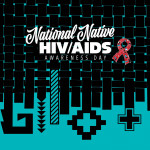On September 20, 2017, Hurricane Maria made landfall in Puerto Rico. The Category 4 storm was the worst to hit the island in a century, leaving nearly 80% of the its 3.4 million residents without electricity and a third of them without running water. It’s estimated that between 3,000 and 5,000 people died in the wake of the destruction.
As POZ reported in “Picking Up the Pieces,” a feature published on the one-year anniversary of the storm, people with chronic conditions such as diabetes and HIV were at high risk for a series of health problems following the hurricane because they couldn’t get their meds and treatment, let alone food and water. What’s more, Puerto Rico, a U.S. territory, has one of the highest HIV rates in the United States—about 20,300 people are living with HIV on the island.
How are people living with the virus doing in 2020, three years after the storm? It turns out, the HIV population is one of the groups most affected by Hurricane Maria, reports LGBT newspaper the Washington Blade. For example, according to research by Columbia University and the University of Puerto Rico’s Medical Sciences Campus, the storm affected the ability to maintain viral suppression—the proportion of people with an undetectable viral load dipped from 71% to 65%—and the proportion of HIV-positive people with access to health services dropped 2%.
The process of rebuilding homes and infrastructure on the island has been slow, partly because of corruption within the government. People have lost jobs, and clinics have shuttered. The arrival of COVID-19 only compounded the challenges.
Anselmo Fonseca, a health and human rights advocate who operates an AIDS service organization, told the Blade that many Puerto Ricans also contend with posttraumatic stress disorder.
A glimmer of hope, as the newspaper reported, is that nongovernmental organizations in the states, including AIDS Healthcare Foundation, have stepped up to offer assistance to Puerto Ricans.
In related news, don’t miss “How HIV Communities Can Prepare for Natural Disasters.”







Comments
Comments